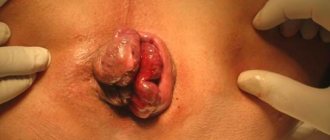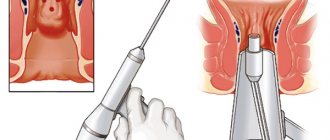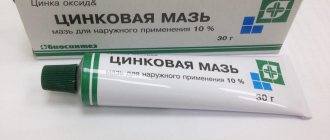Make an appointment The problem of hemorrhoids is quite common among people. It accounts for 35–40% of all rectal diseases. Ligation of hemorrhoids allows you to cope with it in 85% of cases.
Due to genetic predisposition, a sedentary lifestyle, and dietary habits, dilation of the veins of the hemorrhoidal plexus occurs in the anus. They take on the appearance of nodes: they are enlarged, painful, and blood clots can form in them. A person suffering from hemorrhoids notes prolapse of the nodes outside the rectum, which requires their reduction. When injured, they bleed, can become inflamed, and when pinched, ischemia and necrosis develop. With a long course of the disease, the surrounding intestinal mucosa suffers. It can ulcerate, become inflamed, and with frequent bleeding, anemia develops.
Treatment, removal of hemorrhoids - profile of the Alan Clinic medical center. Contact our specialists.
Briefly about the main thing
Ligation of hemorrhoidal nodes with latex rings is a minimally invasive non-surgical method, the mechanism of action of which is to mechanically compress the node’s stem in order to stop the supply of blood to the pathological element.
The technique is used for bloodless removal of internal hemorrhoids and is characterized by a short list of contraindications, minimal risk of complications and a short recovery period.
Before the operation, you should cleanse the intestines, and during the short rehabilitation period, adhere to a diet, observe a protective regime and take medications prescribed by your doctor.
The only drawback of the low-traumatic technique is its limited use. Ligation is not recommended for irreducible hemorrhoids, large and multiple elements, as well as complicated pathology. Therefore, you should contact a proctologist as early as possible!
Treatment of hemorrhoids at the GMS clinic
Ligation at the GMS Hospital Proctology Center is carried out by leading coloproctologist surgeons. The use of modern ligators (mechanical and vacuum) and high-quality consumables provides the following advantages:
- bloodless intervention;
- targeted application of ligature rings to the vascular pedicle of the plexus;
- absence of cicatricial changes and scars at the site of manipulation;
- minimal risk of complications;
- absence of injury to surrounding healthy tissues;
- quick effect.
The manipulation is performed in an outpatient operating room. Preparation is minimal and can be completed on the day of the procedure. Book a consultation with a proctologist in Moscow to learn more about hemorrhoid treatment methods.
The essence of the technique
Ligation with latex rings is used for radical treatment of internal uncomplicated hemorrhoids I-II, in some cases - stage III.
The essence of the method is mechanical disconnection of the node from blood supply by ligating its stem. Stopping the blood supply leads to the death of the node.
The nodes come off together with the applied ligature. This is an invisible, completely painless process for the patient.
Ligation of hemorrhoids with latex rings is a fairly effective method. To prevent the disease from returning, it is necessary to adhere to the rules of prevention.
Types of ligation of hemorrhoids
The details of the procedure differ depending on the type of device. Ligation of hemorrhoids can be:
- Mechanical - the ligator has a handle, a long tube with a piston and a cylinder at the end. The clamp grabs the assembly and pulls it inside the cylinder. The trigger is pressed, causing the piston to push the ring onto the leg of the assembly.
- Vacuum - the device draws in the tissue to be removed using a vacuum. To do this, a medical aspirator is connected to the ligator. Pulling the trigger releases the latex ring. The level of negative pressure is adjusted by the doctor.
- Suture – ligation of the hemorrhoidal artery under the control of an ultrasonic sensor. After suturing the vessel and the adjacent intestinal mucosa, the filling of the hemorrhoidal plexus with blood decreases. The nodes are fixed, so they don't fall out anymore.
Diagnostics
The main diagnostic procedure is endoscopic examination of the rectum (anoscopy). This method, absolutely harmless to the body, will provide a full amount of information: ___• the number of internal hemorrhoids, their size and location, ___• the condition of the intestinal mucosa, ___• the presence of complications and concomitant pathologies of the rectum
In cases where there is reason to suspect a pathological process in the overlying parts of the large intestine, colonoscopy is prescribed.
If the decision is made in favor of ligation, standard preoperative diagnostic tests (laboratory tests) are prescribed.
Indications
Ligation is performed for patients suffering from hemorrhoids (grade 2-3). It should be noted that venous collections must have a pronounced base. If there are special indications, the procedure can also be performed at stage 4.
This technique is widely popular. Proctologists prescribe it if there is no positive effect from drug therapy.
A significant reason is the presence of clinical symptoms, accelerated progression of pathological changes, and recurrence of the disease. The effectiveness of the procedure depends on the prescribed treatment complex and the general condition of the patient. Before ligation, the patient must undergo a diagnostic examination.
Contraindications
The ligation procedure will have to be postponed in case of acute inflammatory process, as well as in case of exacerbations of chronic diseases. Treatment is not carried out during the recovery period after serious illnesses, vascular accidents, injuries, or operations.
Ligation of the internal node is not indicated for combined (internal and external) hemorrhoids, as well as in cases where the underlying disease is accompanied by other pathologies of the rectum: ___• proctitis, ___• anal fissure, ___• polyps, ___• malignant intestinal tumors.
In addition, minimally invasive interventions are not prescribed for complicated forms of pathology (thrombosis, rectal fistulas, bleeding).
Interventions are carried out with caution in cases of blood clotting disorders, liver pathologies, diabetes mellitus, and severe pathologies of the cardiovascular system.
Are there any complications?
The first few days after ligation of the appendix are the most important. If the victim has mild pain, then this is quite normal, but if the pain is severe, you should consult a doctor. There is a possibility that the ligature was applied incorrectly. The same sensations are experienced by those people who have had several nodules ligated at once.
The most common type of complication is thrombosis of external nodes. A similar rule applies to those victims who have been diagnosed with a combined form of the disease. This means that the lesions do not have clear boundaries between internal and external components.
In such a situation, it is impossible to do without a course of conservative therapy depending on the circumstances. But only a proctologist should also prescribe medications, taking into account the current condition of the patient. Rectal bleeding is much less common. The reason for this is the rupture of the latex ring, or its tension is too strong.
Occasionally, the opposite principle leads to the same aftereffects - incorrectly selected size of the knot to support the installed ligature. This will become a catalyst for him to jump off during sudden attempts. Bleeding will also make itself felt if the patient goes against medical recommendations, deciding:
- engage in active sports;
- lift weights;
- empty your bowels according to the rules;
- ignore advice on maintaining personal hygiene;
- do not follow dietary restrictions.
To avoid bleeding during the first bowel movement, you will need to first cleanse the intestines. You will also have to try to avoid bowel movements on the first day by eating only something liquid like broth, juice, or yogurt.
In the following days, doctors insist that patients still soften their stools by eating appropriate foods. It should contain plant fibers and fiber. You also need to carefully monitor your own drinking regime.
To make healing go faster, you should stop sitting for long periods of time and also work on preventing constipation.
Some complications are a direct consequence of exposure to an infectious lesion. With such a development of the scenario, a person experiences pain, weakness, fever, and problematic urination.
If you notice any of the above symptoms, you should immediately consult a doctor to take emergency measures to counter the spread of infection.
Best materials of the month
- Coronaviruses: SARS-CoV-2 (COVID-19)
- Antibiotics for the prevention and treatment of COVID-19: how effective are they?
- The most common "office" diseases
- Does vodka kill coronavirus?
- How to stay alive on our roads?
Preparation
Preparation for the procedure begins 2-3 days in . It is necessary to stop taking medications that affect blood clotting (aspirin, ibuprofen) and switch to an intestinal-friendly diet.
The list of restrictions includes: ___• coarse vegetable fiber (cabbage, fresh vegetables and fruits), ___• legumes, ___• whole milk, ___• fatty foods, ___• sweets, ___• pickles, marinades, spices, ___• carbonated drinks, ___ • alcohol.
The day before your visit to the doctor, it is recommended to have an early light dinner and a light breakfast in the morning. Colon cleansing is carried out twice: in the evening and in the morning using the Microlax microenema.
Diet after hemorrhoid ligation
It is important to avoid constipation after surgery. To do this, you should exclude alcohol, carbonated drinks, sweets, baked goods, spicy, salty and fatty foods, cow's milk, legumes, cabbage and fresh vegetables. It is better to heat them, you can use fruit jelly, boiled, stewed vegetables, cereals. Drink enough fluids.
In addition to proper nutrition, it is recommended not to lift heavy objects for the first time after the procedure, to get enough rest, and to perform daily hygiene procedures.
Removal of hemorrhoids with rings is a quick and effective procedure, easily tolerated by patients, and relieves symptoms of the disease. It is important to change your lifestyle to prevent the return of unpleasant moments and follow your doctor’s recommendations. Minimally invasive intervention is effective in the early stages, when there are no complications. Therefore, for any symptoms, you should seek qualified help and not self-medicate.
Hemorrhoidal thrombosis, the treatment of which should never be delayed, requires medical supervision!
Make an appointment
Technique
The procedure is performed with the patient lying on his side with his legs bent. The proctologist inserts an anoscope into the anus to, under visual control, apply an elastic hypoallergenic loop - a ligature - to the base of the node.
To carry out the operation, a special device is used - a vacuum ligator , with the help of which the pathological element is captured and a latex ring is put on it.
The manipulation is absolutely painless for the patient and therefore can be performed without anesthesia. The duration is less than an hour. At the end of the procedure, the patient can go home.
During one session, the doctor applies only one ligature. If there are several nodes, the procedure will have to be repeated. The interval between operations should be at least 1 week. Large formations are removed in stages. Your doctor will set a date for your follow-up visit.
How is ligation performed?
The procedure for ligating hemorrhoids is painless and does not require the use of anesthesia.
The doctor examines the anal canal, treats the intestinal walls with an antiseptic and, using a mechanical or vacuum ligator, which is inserted through the lumen of the anoscope, isolates the node, pulling it inside the head of the device with a soft clamp and throwing a tight latex ring onto the base, which tightly compresses the vascular pedicle, completely cutting off the blood supply. vessels. Made from natural hypoallergenic material, the ligature is inert to microbes and safe for the body. After 11–14 days, the node dries out and is torn away, and connective tissue is formed in its place.
The procedure takes no more than 10–15 minutes. In one manipulation, ligation of one or maximum two nodes can be carried out. Accordingly, the more of them are identified, the more visits to the doctor will be required.
You have questions? We will be happy to answer any questions Coordinator Tatyana
Unpleasant consequences and methods of dealing with them
Unpleasant sensations
The most common side effect after applying a latex ring to an internal hemorrhoid is a sensation of a foreign body in the rectum. Medical measures are not indicated in such cases; over time, the intensity of the sensations decreases and does not cause concern to the patient.
pain may occur , the severity of which depends on a number of factors (the size of the node, its location, the characteristics of the patient’s individual sensitivity).
Pain should be relieved using medications recommended by your doctor. In case of resistant (constant) pain syndrome, you should consult a specialist, since pain can be a symptom of the development of complications.
Blood clot formation, bleeding, inflammation
___1. Blood clot formation is a very rare complication. The actions of doctors will depend on the situation: both conservative and surgical treatment may be prescribed. ___2. Sometimes such an unpleasant side effect occurs as staining of stool with blood . Most often, blood in the stool appears during the natural passage of a pathological element. Less commonly, the symptom indicates injury to the node with feces and/or the development of complications. If severe bleeding occurs, you should immediately consult a doctor. ___3. Inflammatory processes during minimally invasive interventions are extremely rare. As a rule, an infectious-inflammatory process occurs as a result of trauma to the nodule with solid feces, so to prevent complications it is necessary to adhere to a diet.
Latex ring slipping
Premature slippage of the latex ligature is a fairly rare complication that will invalidate the result of the operation. As a rule, the cause of slipping is excessive physical effort (weight lifting, sports, straining due to constipation). If this happens, contact your healthcare provider to have the procedure repeated.
Ligation of hemorrhoids: description of the process
The patient lies on his side, the area around the anus is disinfected, and an anoscope is inserted into the rectum. For the procedure, a hemorrhoidal ligator is used. This is a small device, it is inserted through the anonoscope, retracts the node and then places a rubber ring on the leg.
What is a ligature in surgery? It is a bandage of something. In this case, a latex hemorrhoid ring is placed at the base of the hemorrhoid. For grade 1, a standard-hardness ring is suitable; for grades 2 and 3, a product with increased rigidity is needed.
The ring presses tightly against the walls, stopping the flow of blood. The node itself gradually dies and disappears within 10 to 14 days, and the walls of the veins heal. As a result, no changes occur in the mucous membrane, blood flow through the veins is maintained, but the enlarged area that prolapsed, bled and otherwise bothered the patient no longer exists.
After the procedure, a tampon soaked in anesthetic ointment is inserted. Venotonics, anti-inflammatory and painkillers are prescribed. After 3–5 days, the mucous membrane is examined to assess the result and prevent complications.
Recovery period
Protective regime and hygiene procedures
All ongoing rehabilitation measures are aimed at speedy healing of the wound and prevention of complications: ___• In the first days, it is necessary to limit physical activity. You cannot lift weights exceeding 5 kg or visit the sauna. ___• A week after surgery, moderate physical activity is allowed: swimming and race walking. ___• The ban on strength sports and heavy physical labor remains in effect for a month. ___• Perineal toileting is carried out as usual (twice a day, morning and evening).
Diet food
The vast majority of complications after ligation surgery occur as a result of injury from solid feces. Therefore, it is necessary to exclude from the menu products that have an irritating and strengthening effect: ___• semolina porridge, rice, ___• potatoes, ___• legumes, ___• spicy and smoked dishes, ___• baked goods made from wheat, ___• carbonated drinks, ___• alcohol.
It is necessary to observe the temperature regime: you should not eat too hot or too cold foods. The optimal solution is warm, soft food: stewed, boiled, pureed (fried and smoked foods are strictly prohibited).
In order for the rehabilitation process to proceed at a normal pace, adequate nutrition is necessary: dietary meat, poultry, fish, boiled or stewed vegetables, and fermented milk products.
Medication support
To prevent complications of hemorrhoid ligation, proctologists prescribe drugs from several groups.
Painkillers from the group of non-steroidal anti-inflammatory drugs reduce the severity of pain and inhibit the inflammatory response. Such drugs are prescribed orally (Nurofen, Ketanov).
To avoid injury from hard feces, take stool softening laxatives (for example, Forlax).
Preparatory activities and rehabilitation
Ligation of internal hemorrhoids (the procedure is not suitable for external ones) does not require specific preparation or hospitalization. You can prepare for the procedure at home or undergo a comprehensive examination in a hospital. Mandatory diagnostic methods: ECG, anoscopy, colonoscopy, a number of laboratory tests. Preparatory activities at home:
- follow a therapeutic diet, avoid fatty and fried foods, fast food, soda and alcohol;
- temporarily stop taking anticoagulants and other drugs that interfere with blood clotting;
- in the morning before the procedure, perform a cleansing enema or cleanse the intestines using laxative suppositories;
- perform a hygienic procedure for the perineum, and then go to an appointment with a proctologist.
The procedure lasts up to 20 minutes, after which the patient remains under medical supervision for another couple of hours. For a speedy recovery, it is important to follow the following medical recommendations:
- adhere to a therapeutic diet;
- take painkillers and anti-inflammatory drugs, antibiotics if indicated;
- after a few days, enrich your daily diet with fiber-rich foods;
- drink more fluids, maintain water balance up to 2.5 liters of water per day;
- If you have difficulty defecating, take laxatives.
In addition, it is important to be vigilant and monitor the condition of the anorectal area, to exclude massive bleeding and displacement of the latex ring. If you feel acute pain after ligation, immediately contact a proctologist.
How to protect yourself from relapse
Ligation of hemorrhoids is a reliable treatment method. However, if the patient is predisposed to developing this disease, hemorrhoids may recur.
To prevent a relapse, you should minimize the number of factors contributing to the development of pathology: ___• normalize stool, ___• get rid of excess weight, ___• give up spicy food and alcohol, ___• avoid prolonged sitting, ___• limit severe physical activity exercise, visiting a bathhouse, sauna, ___• it is recommended to engage in physical therapy, ___• promptly treat diseases of the gastrointestinal tract and genitourinary system.
Statistical data show that if all recommendations are followed, the relapse-free period after ligation of nodes can last indefinitely (10-15 years or more).
Advantages of Latex Ring Ligation
The main advantage of this method is that no surgery is required. A positive effect is achieved in 80% of cases. It is very rare for the disease to return; the patient must follow the regimen recommended by the attending physician.
- the procedure is performed on an outpatient basis
- you can do without anesthesia
- it is possible to carry out manipulations during pregnancy
- fast rehabilitation
- affordable price
- high effectiveness when following doctors’ recommendations
Is it possible to postpone the operation?
Ligation of hemorrhoids is a planned procedure that can always be postponed. Even gentle interventions must be carried out against the backdrop of physical and psychological well-being.
However, it should be taken into account that chronic hemorrhoids are prone to the development of complications such as: ___• thrombosis and bleeding of the node, ___• infectious and inflammatory complications (proctitis, paraproctitis), ___• anal fissure.
At the stage of irreducible hemorrhoids, with large and/or multiple nodes, as well as in the event of complications, doctors will be forced to abandon low-traumatic treatment methods in favor of traditional surgery (hemorrhoidectomy).
A long course of chronic hemorrhoids, accompanied by bleeding, leads to anemia, physical and nervous exhaustion.
Postoperative treatment with medications
Even though the technique is performed on an outpatient basis, the patient still needs to take some medications after the procedure. Medicines are selected by the doctor taking into account the patient’s well-being and the progress of the operation itself.
The group of medications prescribed by the doctor includes the following drugs:
- analgesics - help cope with pain. Detralex, Nurofen, Ketanov and others are used here. Typically, painkillers are used for 3–5 days, after which the discomfort goes away;
- Anticoagulants are drugs that prevent the formation of blood clots. Among them, Heparin, Klevarin, Venolife and others are used. To prevent thrombosis, anticoagulants are prescribed for a course of 3–5 days;
- laxatives. Stool softeners help prevent damage to hemorrhoids and rupture of the ring from hard feces. For this purpose, Bisacodyl, Glycerol, Duflac and others are used. Typically, the duration of therapy with their help is up to 1 month;
- anti-inflammatory, wound-healing and bactericidal rectal suppositories. A specialist can prescribe such remedies as Relief, suppositories with propolis, calendula, Ultraproct, Gepatrombin G.
To reduce pain after ligation, patients are prescribed painkillers
Important! You cannot select medications on your own. The tactics of drug therapy are determined exclusively by a specialist who knows his business.
Patient reviews
Anastasia, Lipetsk “I rarely write reviews, but I think that this information will be useful for patients who cannot decide to undergo ligation. I had surgery a few months ago in a private clinic. Why private? Yes, because the state does not provide such services, and if they do, it is at the same price as in the private ones. The doctor said that the technique is low-traumatic and painless. I cannot agree with the second point, because when a blood clot forms in a compressed node, it hurts quite severely. Despite this, I managed to get rid of the hemorrhoidal cones, and in a month I’m going for surgery to remove the next nodes.”
Valery, Tomsk “The doctor suggested ligation to me when the hemorrhoids progressed to the third degree; before that I treated the lumps with medication, but the therapy did not give the desired result. The doctor said that before it is too late, we need to use latex rings. I did not undergo any preparation, except that I gave up evening and morning meals. The procedure itself was not pleasant, but I did not feel any severe pain. Discomfort appeared a few hours after the procedure; when I came home, I felt that there was a feeling of a foreign object in the rectum, pain. The doctor warned me about these consequences and prescribed painkillers. After 8 days I noticed a black clot in the stool, I assume that this was a dead node. I didn't have any complications. The method is excellent."
Valeria, Kharkov “I have been suffering from hemorrhoids for several years, I still couldn’t decide to have surgery, because it hurts, and then I have to stay in the clinic for at least a week. A friend recommended ligation to me. Having learned more about the method, I decided to undergo this type of treatment. After the doctor installed the ring, he went home and then it all started. The pain was so bad that I literally almost climbed the wall, and I couldn’t get through to the doctor. The next day it was also not possible to catch him at the clinic. I turned to another specialist, who said that such pain arose due to an incorrectly installed ring. I already had the second ring installed by this specialist, everything went fine. My advice to you is to choose your doctor carefully, and everything will go well.”
Marina, Novorossiysk “My husband suffers from hemorrhoids, he does not accept any interventions, so he prescribed treatment for himself, guided by advice from the Internet. When the pain and discomfort could no longer be relieved by medication, I made an appointment for him to see a doctor. Apparently, realizing that there was nowhere to delay further, he agreed. The doctor prescribed ligation. The service cost us 6 thousand, plus the cost of the inspection. After the procedure, the pain persisted for several days, but it was easily relieved with painkillers. As the doctor promised, the node fell off within a week. The next operation was scheduled in 4 weeks. The method is good, it helped my husband a lot.”










